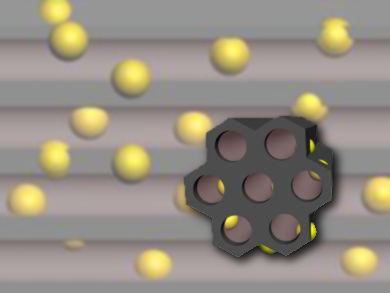The electrochemical performance of lithium-ion batteries (LIBs) critically relies on the properties and characteristics of the electrode materials. A good material is expected to offer a high specific capacity, good rate capability, and excellent cycling stability together with low costs and safety for users and the environment.
Yusuke Yamauchi, National Institute for Materials Science, Tsukuba, Japan, and colleagues have developed tin oxide nanoparticles (SnO2 NPs) encapsulated in an ordered mesoporous carbon (OMC) host. The carbon framework shows a desirable mesoporous structure with a high surface area, and the SnO2 NPs are highly loaded (up to 80 wt %) and homogeneously distributed within the OMC matrix.
The SnO2@OMC composite material shows an enhanced cycling performance during the alloy and de-alloy processes of LixSn and thus has a high performance capability as an anode material for LIBs. The material exhibits an initial charge capacity of 943 mAh g−1 and retains 68.9 % of the initial capacity after 50 cycles at a current density of 50 mA g−1.
This synthetic strategy for designing ordered mesoporous carbon-based composite materials can be extended to fabricate other high-performance anode materials, which could offer a facile approach to improve the electrochemical performance of next-generation LIBs.
- High-Loading Nano-SnO2 Encapsulated in situ in Three-Dimensional Rigid Porous Carbon for Superior Lithium-Ion Batteries,
Hairong Xue, Jianqing Zhao, Jing Tang, Hao Gong, Ping He, Haoshen Zhou, Yusuke Yamauchi, Jianping He,
Chem. Eur. J. 2016.
DOI: 10.1002/chem.201504420




